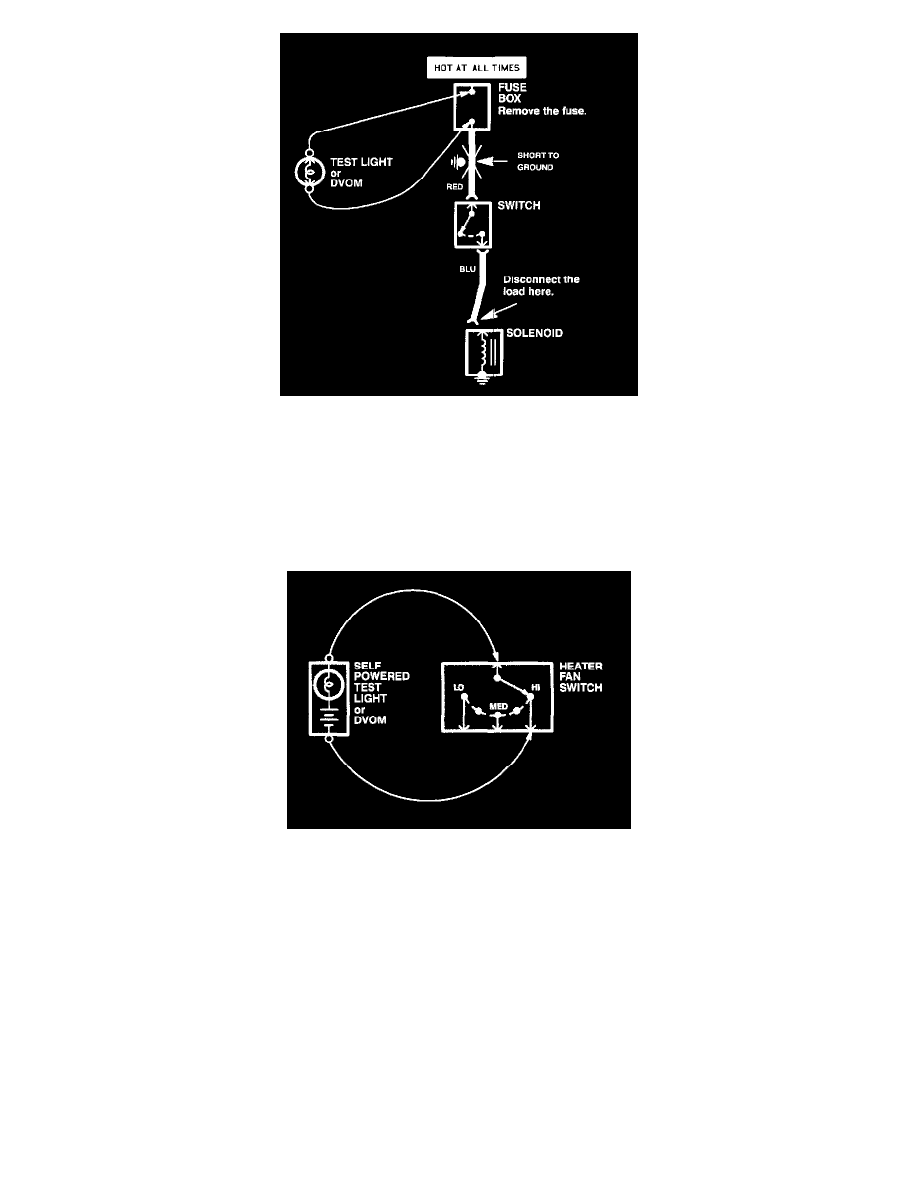Rodeo LS 4WD V6-3.2L (1998)

1. Remove the blown fuse and disconnect the load.
2. Connect a test light or Digital Volt/Ohmmeter (DVOM), switched to the appropriate DC Volts range, across the fuse terminals to make sure
voltage is present. You might have to turn the ignition switch to ON; check the schematic to see.
3. Beginning near the fuse box, wiggle the harness. Continue this at convenient points about six inches apart while watching the test light or DVOM.
4. Where the test light goes off, or the DVOM voltage drops to 0 Volts, there is a short to ground in the wiring near that point.
NOTE: Always use a DVOM on high impedance circuits. A test light may not glow (even with battery voltage present).
Testing For Continuity
When testing for continuity at a connector without wire seals, you do not have to separate the two halves of the connector. Instead, probe the connector
from the back. Always check both sides of the connector because dirty, corroded, and bent terminals can cause problems (no electrical contact = an
open).
1. Disconnect the negative cable from the car battery. If you're using a Digital Volt/Ohmmeter (DVOM), place it in the lowest "OHMS" range.
2. Connect one lead of a self-powered test light or DVOM to one end of the part of the circuit you want to test.
3. Connect the other lead to the other end.
4. If the self-powered test light glows, there is continuity. If you're using a DVOM, a low reading or no reading (Zero Volts), means good continuity.
Testing For Voltage
